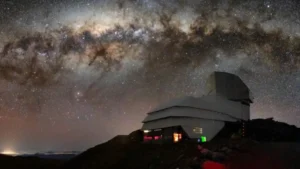A giant blast of solar radiation that would bring the modern world to its knees once hit Earth — and another could strike relatively soon.
Okay, relatively soon in the grand scheme of things. The jolt in question occurred about 14,300 years ago, according to a Royal Society study published Monday.
However, results of radiocarbon testing show similar events happen roughly once every 1,000 years.
“It’s clear that if one of these events [occurred] today…this would be quite destructive on our energy network and also internet network,” Edouard Bard, lead author of the study, told the Washington Post. “All communications and [travel] would be totally disrupted.”
An extreme solar storm
During a solar storm, the sun’s magnetic field weakens enough to send massive solar flares and coronal mass ejections (CMEs) hurtling through space. A curtain of charged particles radiates out and anything in its path gets slammed with a full dose.
There are no recorded witnesses of a storm as strong as the one the researchers detected. The strongest similar event ever recorded was the 1859 Carrington Event. It was heavy enough to electrocute telegraph operators across the United States, knocking out systems as it traveled.
The Carrington Event was weaker than the 14,300-year-old storm by an order of magnitude, the Post reported.
Tracing its existence required a herculean feat of interdisciplinary science. The only way to track the sun’s behavior before its recorded history is to measure radiocarbon trapped in ancient material. In this case, the samples existed in fossilized trees under French river beds and from ice cores in Greenland.
View this post on Instagram
This methodology owes to Japanese physicist Fusa Miyake, who developed it in 2012. As a result, the superstorms it indicates are called Miyake Events.
The damage a similar storm would wreak on today’s world remains unquantified. But Benjamin Pope, an astronomer at Australia’s University of Queensland not involved in the study, argued that its results beg further inquiry.
“Even if these Miyake Events occur once a thousand years…I think [it] is pretty serious and definitely merits investment in understanding these events and how to predict and mitigate their effects, if any,” Pope told the Post.






